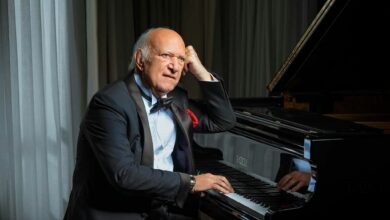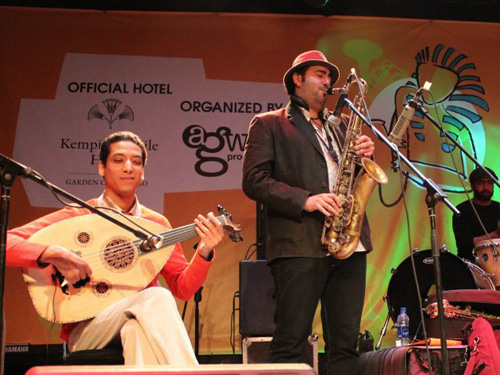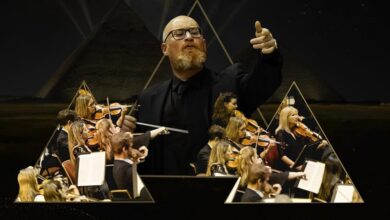Can the term “Jazz” be defined accurately? Can we rely on an immutable definition of this musical style? Jerome Paressant, the young gifted clarinetist of Abraxas Projekt, a French band that performed Friday 12 March as part of the Cairo International Jazz Festival at El Sawy Culture Wheel, seriously doubts it.
Curiously raising an eyebrow, Paressant explains that “Jazz is a form of music that constantly evolves and offers unlimited possibilities of fusion and experimentation.”
Abraxas offers a distinguished fusion between electro music and jazz with a subtlety and elegance that cannot escape even the amateur or the neophyte. Every musical note is carefully calibrated and weighed, each sound is millimetric, almost minimalist.
“There is a relation between jazz and electro music as both work in cycles with samples that repeat themselves regularly,” says Paressant.
The soft wave of the electro sounds fills the air, its hovering beat repeating itself over and over until the piercing sound of the clarinet comes along, rapidly accompanied by the generosity of Antoine Hefti’s drums.
Paressant explains that he had long been looking for a drummer “until providence led me to Antoine." He adds that “chemistry needs to be found between the acoustic instruments and the electronic music, and for a drummer this balance is not easy to achieve.”
“Electronic music can be very high pitched or very low pitched, but will always remain linear…Antoine’s drums are so important because they bring nuances and crescendos,” Paressant says.
From the beginning the collaboration between these two musicians was a success and gave birth to “Baraka Visions,” the band’s latest album released in 2009.
The album draws its inspiration and its lightness from various parts of the world: "Origan" features Pressant’s kalimba–an instrument from Africa with strips of metal that produce a marvelous sound when pressed– while “Zenn” offers slow air loops and Asian vibes.
Traditional instruments like Tibetan bowls, stones and bendir pepper this musical compilation and give it a surreal and magic feel. An interlude of “Assob”–“Bossa” spelled backwards–offers a sensual approach to Bossa Nova, exploring a more common musical register.
Many guest musicians from the electro universe, including Lena, Vadim Vernay, Hopen, and Oldman, participated in the development of this album.
The collusion between acoustic and electronic sounds switches from contemplative to frenzied in the blink of an eye, constantly arousing the listener’s ear.
Jerome Paressant and Antoine Hefti steadily observe each other on stage as they gradually construct a musical dialogue. “We improvise constantly," Hefti explains. "Of course both of us know every base of every single track and how the song is going to be sequenced, but when we start playing we have no idea what is going to happen.”
“We can either play along or fight a musical duel, but nothing is planned beforehand," he adds.
The relationship between drums and clarinet is obvious as the instruments melt into one another, without either dominating. Behind the stage the Nile purrs lazily as the sun slowly begins its descent and sheds an eerie light. While the songs gracefully fade into one another, the audience seems transfixed, already in another world.




